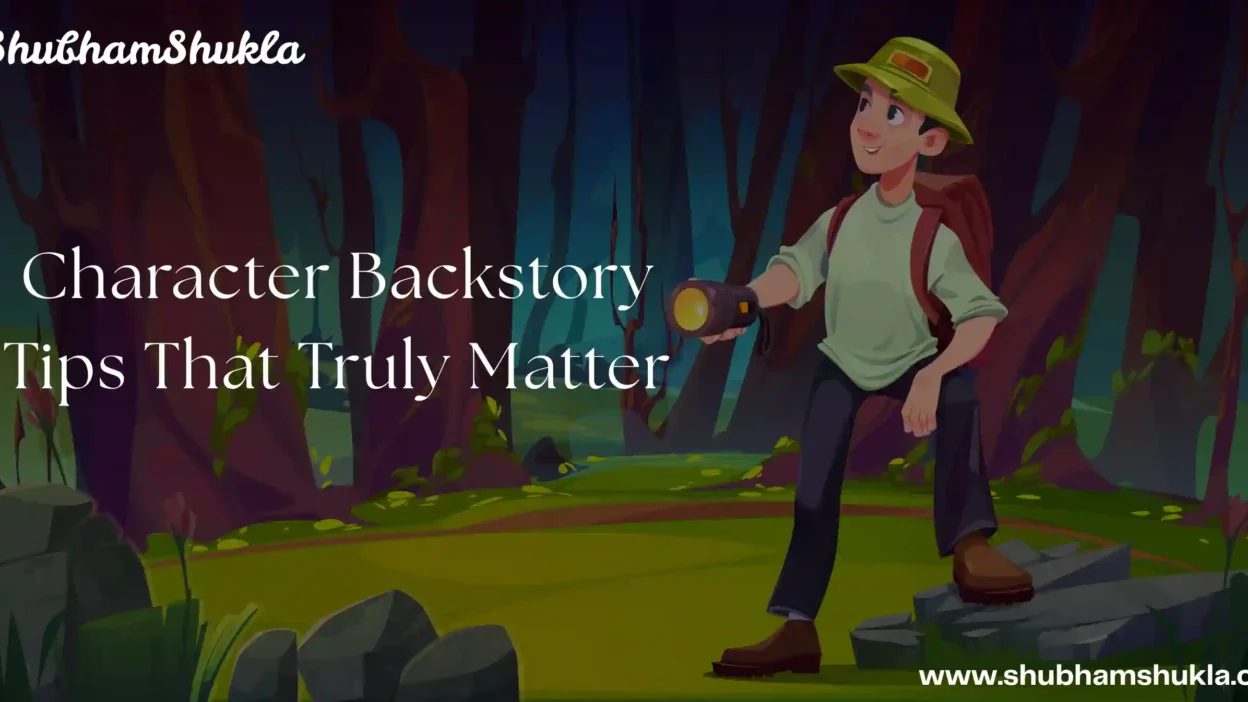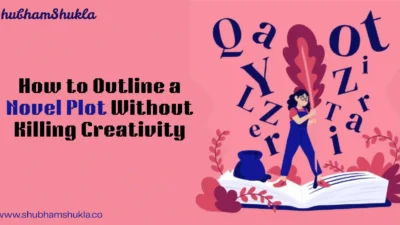You know that feeling when you meet someone new, and they do something unexpected—and you just know there’s a story behind it? That’s the power of a strong character backstory.
It’s not just about what your characters are doing now, but why they’re doing it. And for fiction writers like us, building that “why” is one of the most rewarding (and challenging) parts of storytelling.
Whether you’re writing epic fantasy, cozy romance, or dark thrillers, character backstory is what gives your characters dimension. It explains their fears, fuels their goals, and adds emotional texture to every scene.
But here’s the trick: it has to feel real, not like a list of tragic events pasted into chapter one.
Let’s dig into how to write character backstories that are compelling, relevant, and actually enhance your story—without overwhelming it.
What Is a Character Backstory?
A character backstory is the life your character lived before your story begins. It includes childhood experiences, family history, traumatic events, joyful memories, regrets, dreams, relationships—everything that has shaped who they are now.
But backstory isn’t just filler or fluff. Done well, it explains a character’s current behavior in a way that feels believable.
Think of Harry Potter and the cupboard under the stairs. Katniss Everdeen hunting in the woods. Frodo inherited the burden of the Ring from his uncle. Their choices make sense because we understand their pasts.
The best character backstories don’t just tell us about the character—they show us why they matter.
Why Character Backstory Drives Everything
Let’s say your protagonist is terrified of water. That fear alone is interesting—but when the reader learns he nearly drowned as a child while his older brother watched helplessly, it becomes powerful. Now there’s emotion behind it. Stakes. Conflict.
Character backstory gives readers emotional entry points. It helps us empathize. It can even create tension if the character’s past is a secret—something they’re hiding from others, or from themselves.
Here’s a quick example: In The Secret History by Donna Tartt, much of what makes the characters fascinating is what they’re not saying.
Their pasts linger under the surface of every action, adding a kind of narrative pressure that keeps us turning the pages.
You may also like: Book Review – From ML Algorithms to GenAI & LLMs
How to Weave Backstory Naturally (No Info Dumps!)
Okay, here’s where a lot of writers get tripped up. We fall in love with the character’s history and then we want to share it all right away. But dumping a page of backstory in chapter one? That’s a quick way to lose your reader.
Instead, reveal your character backstory like you’re dropping breadcrumbs. Let the past peek through in:
- A flash of memory during a key moment
- A comment in a tense conversation
- A dream, a smell, or a visual cue that brings something back
- A reaction that feels “too big”—and makes the reader curious
Think about how memory works in real life. We don’t tell our whole story up front. It comes out in bits when it matters. Look at The Hunger Games. We don’t get Katniss’s full history with Peeta in chapter one.
We discover it piece by piece, at the moments it carries the most emotional weight.
You may also like: Top 10 JK Rowling Books Ranked by Readers
In My Own Experience, I Found That…
…writing backstory often became a way to avoid writing the actual plot. I’d spend hours fleshing out my character’s entire family tree, their first heartbreak, the name of their childhood pet. And while it helped me understand them, it didn’t always serve the story.
Eventually, I learned that the most effective character backstory is the part that shows up in the story. If it doesn’t impact how the character thinks, reacts, or chooses—then it’s just interesting trivia.
Now, I ask myself: “How will this shape the character’s present?” If it doesn’t change anything, I don’t include it.So if you’re stuck, here’s my advice: write the backstory for you, then edit it for the reader.
Use Backstory to Build Tension and Motivation
One of the most exciting things about a good character backstory is how it can create inner conflict.
- A character haunted by guilt might overcompensate with perfectionism.
- Someone betrayed in the past might sabotage every new relationship.
- A former golden child might rebel after years of repression.
These inner wounds and patterns can drive your story forward without you having to invent a bunch of external drama. The best part? Readers don’t always need to know the full story. Sometimes a single hint is enough.
Example: In Big Little Lies by Liane Moriarty, we know something happened in Jane’s past, but the details unravel slowly. That delay creates suspense—and when it’s finally revealed, it hits.
You may also read: Anecdote: Definition, Types, Uses with Examples
Common Backstory Mistakes (And How to Avoid Them)
Let’s be honest, we’ve all made these at some point:
1. The “Info Dump”
We’ve touched on this, but it’s worth repeating: don’t stop the story to explain everything.
2. Backstory for Backstory’s Sake
If it doesn’t connect to the current narrative, ask yourself why it’s there.
3. Overcomplicating It
You don’t need five traumas, a secret twin, and a prophecy. Pick one or two powerful, meaningful events that shaped your character.
4. Forgetting Change
Characters should evolve from their past—not be trapped by it forever. Let them grow.
Character Backstory FAQs
Q: Do I need to write the full backstory before starting my novel?
Not necessarily. Some writers do; others discover it as they go. Start with what you need to know—then fill in the gaps as the story demands.
Q: Can I reveal the backstory in flashbacks?
Yes, but use them sparingly. Flashbacks should carry emotional weight and be tied to something happening now.
Q: How detailed should a character backstory be?
Detailed enough to explain their current behavior. You don’t need their entire life story—just the key turning points.
Q: Should supporting characters have backstories too?
The important ones? Yes. But again—only share what impacts the story or adds emotional resonance.



